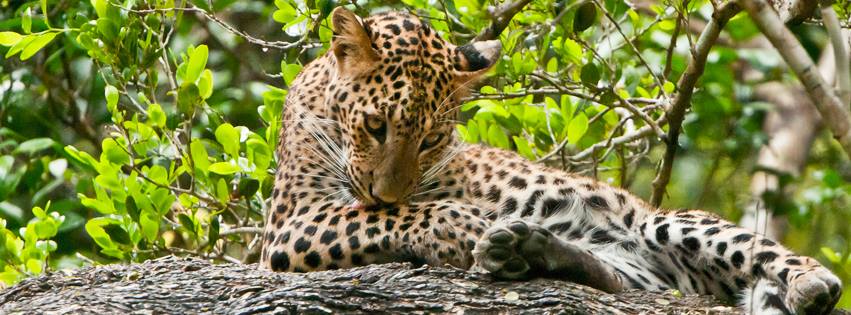that brings you up, close and personal with untamed world of wildlife. Whether you are an avid nature lover or visiting a wildlife park for the first time, if you come here with a mind that’s eager to explore and learn, you will go away with new-found meaning to life. Yala combines a strict nature reserve with a national park. Divided into 5 blocks, the park has a protected area of nearly 130,000 hectares of land consisting of light forests, scrubs, grasslands, tanks, and lagoons. Two blocks are currently opened to the public.

It’s home to Panthera pardus kotiya, a majestic leopard endemic to Sri Lanka. But among the glorious spectacle of wildlife, you’d also witness the tell-tale signs of a lost civilization. The Monastic settlement of Sithulpawwa, an important pilgrim site, is said to have housed 12,000 inhabitants seeking solace, some 2000 years ago. The restored rock Temple, among a series of well-preserved ancient temples, offers a glimpse into a glittering past.
The monstrous Tsunami of 2004 struck the park on that fateful day of December 26. Some 250 people in and around the park were consumed by the rampaging waves, also forever changing the land features of Yala’s coastal belt. The fascinating discovery in the Tsunami’s aftermath was that no animals were in harm’s way, prompting a theory that ‘sixth sense’ of animals took them out of the path of oncoming waves.
[srizonfbvid id=21458]
Discover the spectacular wilderness of Yala National Park, the core of a contiguous system of nine connected protected areas, and home to much of Sri Lanka’s magnificent wildlife.
Because in Sri Lanka they are the top predator (Because there are no tigers, lions or cheetahs they have to hide from).